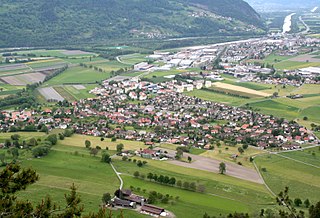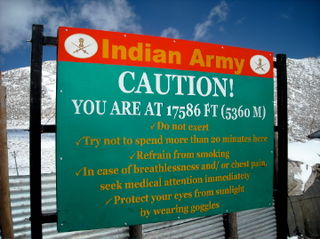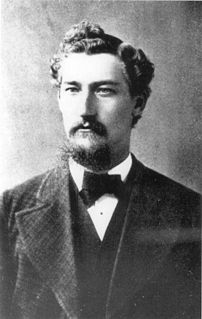A medical sign is an objective indication of some medical fact or characteristic that may be detected by a patient or anyone, especially a physician, before or during a physical examination of a patient. For example, whereas a tingling paresthesia is a symptom, erythema is a sign. Symptoms and signs are often nonspecific, but often combinations of them are at least suggestive of certain diagnoses, helping to narrow down what may be wrong. In other cases they are specific even to the point of being pathognomonic.

Pulmonology is a medical speciality that deals with diseases involving the respiratory tract. The term is derived from the Latin word pulmō, pulmōnis ("lung") and the Greek suffix -λογία, -logia. Pulmonology is synonymous with pneumology, respirology and respiratory medicine.

Tuberculosis management refers to the medical treatment of the infectious disease tuberculosis (TB).

Miliary tuberculosis is a form of tuberculosis that is characterized by a wide dissemination into the human body and by the tiny size of the lesions (1–5 mm). Its name comes from a distinctive pattern seen on a chest radiograph of many tiny spots distributed throughout the lung fields with the appearance similar to millet seeds—thus the term "miliary" tuberculosis. Miliary TB may infect any number of organs, including the lungs, liver, and spleen. Miliary tuberculosis is present in about 2% of all reported cases of tuberculosis and accounts for up to 20% of all extra-pulmonary tuberculosis cases.

Arosa is a statistic town and a municipality in the Plessur Region in the canton of Graubünden in Switzerland. It is both a summer and a winter tourist resort.

Joseph Škoda was a Czech physician, medical professor and dermatologist. Together with Carl Freiherr von Rokitansky, he was the founder of the Modern Medical School of Vienna.

Royal Brompton Hospital is the largest specialist heart and lung medical centre in the United Kingdom. It is managed by Royal Brompton and Harefield NHS Foundation Trust which also manages Harefield Hospital near Uxbridge.
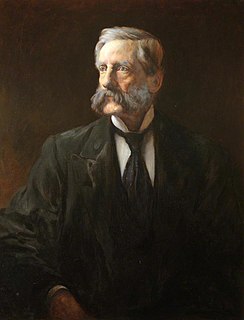
Arthur Hill Hassall was a British physician, chemist and microscopist who is primarily known for his work in public health and food safety.
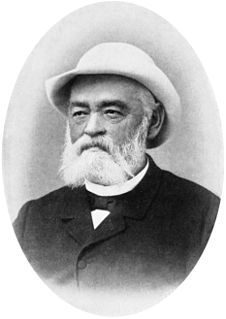
Alexander Spengler was a German physician and the first physician specializing in tuberculosis in Davos.
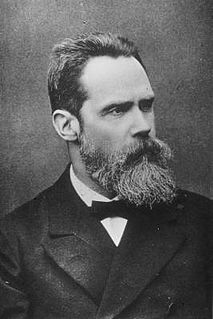
Leopold Schrötter Ritter von Kristelli, was an Austrian internist and laryngologist born in Graz. He was the son of chemist Anton Schrötter von Kristelli, and father to physician Hermann Schroetter-Kristelli (1870–1928).
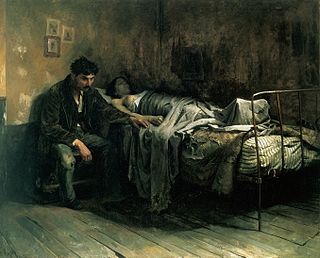
Consumption, phthisis and the White Plague are all terms used to refer to tuberculosis throughout history. It is generally accepted that Mycobacterium tuberculosis originated from other, more primitive organisms of the same genus Mycobacterium. In 2014, results of a new DNA study of a tuberculosis genome reconstructed from remains in southern Peru suggest that human tuberculosis is less than 6,000 years old. Even if researchers theorize that humans first acquired it in Africa about 5,000 years ago, there is evidence that the first tuberculosis infection happened about 9,000 years ago. It spread to other humans along trade routes. It also spread to domesticated animals in Africa, such as goats and cows. Seals and sea lions that bred on African beaches are believed to have acquired the disease and carried it across the Atlantic to South America. Hunters would have been the first humans to contract the disease there.

The Albula Railway is a single track metre gauge railway line forming part of the so-called core network of the Rhaetian Railway (RhB), in the Canton of Graubünden, Switzerland. It links Thusis on the Hinterrhein with the spa resort of St. Moritz in Engadine.
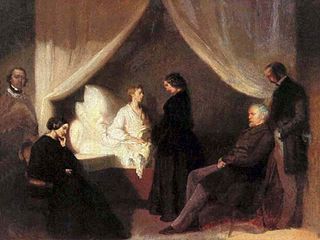
Frédéric Chopin's disease and the reason for his premature death at age 39 were frequently debated for over 150 years. Although he was diagnosed with and treated for tuberculosis throughout his lifetime, a number of alternative diagnoses had been suggested since his death in 1849. A comprehensive review of the possible causes of Chopin's illness was published in 2011. A visual examination of Chopin's heart, for which permission was finally given in 2017, indicated the likely cause of death as pericarditis, caused by tuberculosis. This has been disputed by pathologists who say that only a visual examination cannot confirm such a disease.

Johann Wilhelm Fortunat Coaz was a Swiss forester, topographer and mountaineer from Graubünden. In 1850 he made the first ascent of Piz Bernina, the highest mountain in the Eastern Alps. He also gave Piz Bernina its name, after the eponymous pass.
Conrad Brunner was a Swiss physician, surgeon and medical historian. He was particularly concerned with the disinfection of wounds and their healing.
Sigard Adolphus Knopf was a German-born American physician.
Heinrich Gustav Mühlenbeck, name also given as Henri Gustave Muehlenbeck was an Alsatian physician and botanical collector known for his work with bryophytes.
